| 일 | 월 | 화 | 수 | 목 | 금 | 토 |
|---|---|---|---|---|---|---|
| 1 | 2 | 3 | 4 | 5 | 6 | 7 |
| 8 | 9 | 10 | 11 | 12 | 13 | 14 |
| 15 | 16 | 17 | 18 | 19 | 20 | 21 |
| 22 | 23 | 24 | 25 | 26 | 27 | 28 |
| 29 | 30 |
- hanguel
- doubleconsonant
- basic vowels
- gullible
- Advance
- combinedvowel
- Learning
- consonant
- 한글
- learnkorean
- koreanalphabet
- LearningKorean
- beginner
- 발음
- BASIC
- hangul
- basicKorean
- korean
- 쌍자음
- Learn
- Grammar
- 한국어
- 문법
- 받침
- makeasentence
- ㅚ
- ㅈ
- Pronounce
- lastconsonant
- sentencestructure
- Today
- Total
목록분류 전체보기 (66)
Let's learn Korean
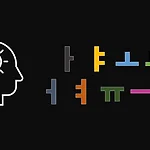 📌 Suitable ending with '-다'
📌 Suitable ending with '-다'
Korean verbs of adverb end ‘-다’ as a standard form. It is changeable with another ending. 받다(receive) / 보다(see) / 먹다(eat) / 싸우다(fight) / 가지다(get) ‘-아/어’ comes after similar vowels. ‘-아’ comes after ‘ㅏ,ㅑ,ㅗ,ㅛ’, ‘-어’ comes after ‘ㅓ,ㅕ,ㅜ,ㅠ,ㅡ,ㅣ’. • 받 + 아 👉 받아 • 보 + 아 👉 봐(abbreviation) • 먹 + 어 👉 먹어 • 싸우 + 어 👉 싸워(abbreviation) • 가지 + 어 👉 가져(abbreviation) ‘요’ is a casual honorific ending so you can put t..
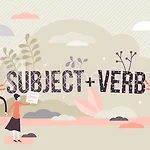 📌 How to make Korean sentence
📌 How to make Korean sentence
The form of Korean sentence is different from with English. If you want to write, "I drink coffee." 💬 I drink coffee. S + V + O 💬나(는) 커피(를) 마셔요. S + O + V As you see, English sentence comes verb first and the object, but Korean come object first and verb last. This is the most important rule of the Korean sentence. Verb is the last. •• (는), (를) are Korean particles that make meaning of the Korea..
 🌿 어떻게 vs 어떡해
🌿 어떻게 vs 어떡해
🍒어떻게 해요? vs 어떡해요? '어떻해요'는 틀립니다. '어떡해'와 '어떻게 (해)'만 맞습니다. '어떻해요' is wrong. Only '어떡해' and '어떻게 (해)' are right. '어떻다'는 형용사, '어떡하다'는 동사입니다. ‘어떻다' is an adverb, an abbreviation of ‘어떠하다’. '어떡하다' is a verb, an abbreviation of ‘어떠하게 하다’. ※ adverd + '-하다'(suffix) = verb 👄Pronounce • 어떻게 [어떠케] • 어떡해 [어떡캐] 의미는 비슷하지만 사용 방법은 다릅니다. Most of the main mean is ‘how’, but the usage is different. You can use ‘어떻게 ..
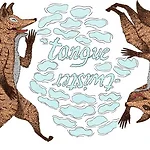 🤐 Korean tongue twister for ‘ㅊ’
🤐 Korean tongue twister for ‘ㅊ’
Let’s try this! 😅Easy •• 칠월칠일은 평창친구 친정 칠순 잔칫날 😂Peasy •• 안촉촉한 초코칩 나라에 살던 안촉촉한 초코칩이 촉촉한 초코칩 나라의 촉촉한 초코칩을 보고 촉촉한 초코칩이 되고 싶어서 촉촉한 초코칩 나라에 갔는데 촉촉한 초코칩 나라의 문지기가 '넌 촉촉한 초코칩이 아니고 안촉촉한 초코칩이니까 안촉촉한 초코칩나라에서 살아'라고해서 안촉촉한 초코칩은 촉촉한 초코칩이 되는것을 포기하고 안촉촉한 초코칩 나라로 돌아갔다 🤣Lemon squeezy •• 경찰청 철창살이 쇠철창살이냐 철철창살이냐
 🌿 고맙습니다 vs 감사합니다.
🌿 고맙습니다 vs 감사합니다.
Korean has two ways of expression of 'Thank you'. Which is more polite? 고맙습니다, or 감사합니다? Do they have different meanings? Most Korean use both. '감사' in '감사합니다' comes from the Chinese character, and '고마워요'(more honofiric👉고맙습니다) comes frome the native tongue, from Korean to Korean. Many Korean think 감사합니다 is more polite than 고맙습니다. But it is not, Both are same, polite, kind words. I prefer 고맙습니다, ..
 🌿 아직(still, yet)
🌿 아직(still, yet)
🍒 아직 -있다 vs. 아직 -고 있다. 아직 means still or yet. • 저 아직 놀아요. (I still play.) • 저 아직 놀고 있어요. (I am still playing.) We use both. Both are natural. -고 있다 can use only with verb, not adjective. ⭕ 저는 아직 어려요.(I am young) ❌ 저는 아직 어리고 있어요.(I am doing young) If you want to use -고 있다 with an adjective, you have use ’-어지고 있다’ 🙆♀️ 저는 어려지고(
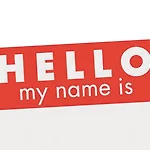 🌿 안녕하세요 is not [안녕하세요].
🌿 안녕하세요 is not [안녕하세요].
**note** I usually use [ ] when I wrote how to pronounce words. ☀️ Most of learners pronounce ‘안녕하세요’ as [안녕하세요], and give an accent to ‘하’. This makes un-natural. Apparently, ‘안녕하세요’ doesn’t have any accent. If it has, then ‘하’ is the very last one to give an accent. Try to say [안녕아세요]. There is no space between these 5 alphabets, so say it straight without space. 🙅🏻♀️[안녕,하세요] ☺️[안-녕-아-세-요] ☺️..
 🌿 진짜가 나타났다!
🌿 진짜가 나타났다!
Here Comes The Authentic! 진짜 means real, authentic, or genuinely. It uses in many ways. ① 🐶: 나 어제 헤어졌어. (I broke up with him/her yesterday.) 🐸: 헉. 진짜???? (No way. Really?????) ② 🐧: 이거 먹어 봐. 진짜 맛있어. (You should try this. it is really good.) Sometines it is used '찐', as shortend slang of '진짜'. 이 구* 신발 찐이야?(Is this GUCC* shoes authentic?) In this nuance, you can use '진짜가 나타났다', means someghing auth..
 👩🏻🏫 Palatalization(구개음화) - 한국어의 발음 02
👩🏻🏫 Palatalization(구개음화) - 한국어의 발음 02
ㄷ이나 ㅌ이 모음 'ㅣ'를 만나면 [ㅈ] 혹은 [ㅊ]으로 발음됩니다. 이것을 구개음화라고 합니다. When the last consonant 'ㄷ/ㅌ' meets the vowel '이' after, it linked with it and prounounced [지/치] for the easier pronounce. This phenomenon is called palatalization. 🍒 Examples • 굳이 👉 [구지] / [구디](x) • 맏이 👉 [마지] / [마디](x) • 해돋이 👉 [해도지] / [해도디](x) • 꽃밭이 👉 [꼳바치] / [꼳바티](x) • 끝이 👉 [끄치] / [끄티](x) • 밑이 👉 [미치] / [미티](x) 어떤 한국인들은 이 구개음화를 잘못된 방법으로 사용하..
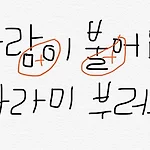 👩🏻🏫 Linking Pronounces - 한국어의 발음 01
👩🏻🏫 Linking Pronounces - 한국어의 발음 01
'ㅇ' 자음은 초성에서 음가가 없습니다. 'ㅇ' is silent when it comes to the initial consonant. 따라서 앞말의 종성과 연음되어 발음합니다. So it is linked withe the last consonant of the forward word. 🍒바람이 불어요. - [바라미 v 부러요] - [바라미부러요] 🍒 Examples - 연이 날아요. 👉 [여니나라요] - 책이 들어와요. 👉 [채기드러와요] - 컵이 높아요. 👉 [커비노파요] - 옷이 작아요. 👉 [오시자가요] - 앞이 깊어요. 👉 [아피기퍼요]
 🌿 Yes or No answers for the negative sentence
🌿 Yes or No answers for the negative sentence
'안/못'이 들어간 한국어의 '예/아니오' 대답은 영어와 다릅니다. In Korean, the Yes or No answers for the negative sentence are different from English. 영어는 자신의 상황에 따라 질문에 대한 대답이 같습니다. You answer these two different following questions with the same Yes or No sentences depends on YOUR SITUATION. Q1 : Did you have your lunch? Q2 : Didn't you have your lunch? • If you had your lunch 👉 Yes, I had my lunch already. • If you di..
 📌 나는 vs 내가
📌 나는 vs 내가
‘나’ is a pronoun that means I, my, me. ‘너’ is a pronoun that means you, your. ‘은/는’ and ‘이/가’ are postposition particles, but have different uses. 🎯 은/는 show the attached word is a TOPIC of the sentence. 🙂 나는 바빠요. (As for me, I am busy.) In this sentence, the topic of this conversation is me. We’re talking about something about me. 🎯 이/가 shows that the attached word is the SUBJECT of the sentenc..
